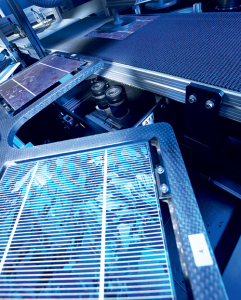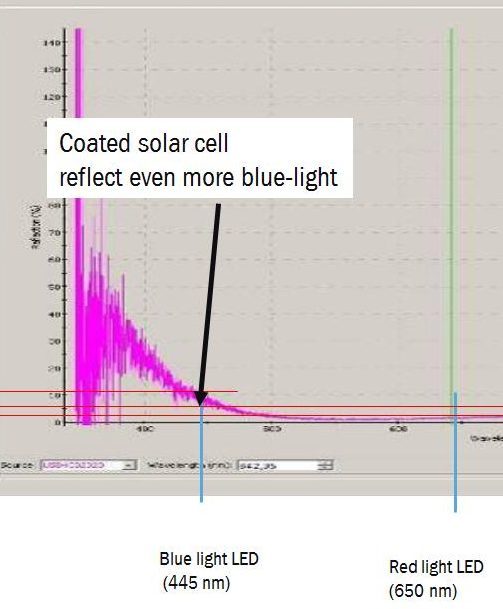You may have heard that blue light has a dark side, but how?
Blue light from popular consumer electronics cited as a source of disrupted sleep cycles. But, for the electronics and solar industry, blue light might actually help you sleep better at night– knowing that blue light photoelectric sensors are accurately detecting dark objects, ensuring higher quality and improving productivity.
 Why is that? Detecting solar cells is a unique challenge because solar cells are designed with anti-reflective coatings that allow the wafers absorb as much sunlight as possible. As a result, solar cells and other very dark objects typically remit very little light, and it can be especially challenging for red-light sensors to receive enough light back to the receiving element in order to detect the wafer. Because of this, traditional photoelectric proximity sensors struggle to reliably detect wafer breakage or jamming, which can negatively impact quality, productivity, and throughput.
Why is that? Detecting solar cells is a unique challenge because solar cells are designed with anti-reflective coatings that allow the wafers absorb as much sunlight as possible. As a result, solar cells and other very dark objects typically remit very little light, and it can be especially challenging for red-light sensors to receive enough light back to the receiving element in order to detect the wafer. Because of this, traditional photoelectric proximity sensors struggle to reliably detect wafer breakage or jamming, which can negatively impact quality, productivity, and throughput.
A photoelectric sensor equipped with blue light LED, however, can accurately detect solar cells and other dark objects.
Why Blue Light LEDs?
Solar cells are optimized to absorb as much sunlight as possible. Because red light is very close to sunlight, very little light in the visible spectrum is emitted back to the receiving element of the sensor. In comparison, blue light is not absorbed as much as red light, allowing for more light to be guided back to receiving element.
The graph below illustrates the difference in the amount of light reflected by coated solar cells when using blue versus red light.
According to SICK Insight, the ultra-mini WTB2S-2 Blue miniature photoelectric sensor takes over when conventional red-light sensors reach their limits. It can be relied upon to detect even the most light-absorbing objects such as dark-blue solar cells. In addition, the ultra-compact design with the performance of large photoelectric proximity sensors offers space-saving machine construction possibilities.
To learn more, watch the following video:






